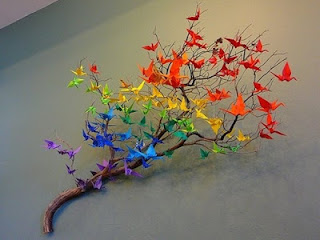I wrote this article for ArtsyShark, a wonderful resource that inspires artists to build better businesses. I encourage you to visit ArtsyShark and see if any of their resources will be of service to you.
The concept of fine craft, as well as fine art, I think we can all agree, include words like
excellence,
standards, and
quality.
When I hear of a master-crafted item, I think about something out of
the ordinary or beyond the usual. I think of an object that inspires
awe.
My background in American-made craft began in the mid-1970s when I was part of the team that published
Quilter’s Newsletter Magazine
in Colorado. Much of my workday saw me helping people focus their love
of sewing and playing with color into either a serious hobby or a
legitimate profession in the quilting arts. The flourishing quilt
industry of the 70’s was yet another cycle of the growing love affair
Americans have had with handmade soft goods for the home that, if not
master-crafted, were at least laboriously made with great love and
attention to detail.
My mom, Bonnie Leman, who was the founding editor of
Quilter’s Newsletter Magazine,
helped her readers improve their quilt making skills, and encouraged
them to seek out that awe-inspiring result. She also invested heavily in
helping them believe in the value of their handmade fiber arts. This resurgence of improving excellence across an ever-growing body
of quilt makers in America was in full swing when big-box stores like
Sears began importing bed quilts from China. I observed that anyone who
had ever attempted to create a quilt knew that these quilts were not
inspiring, they were heartbreaking. In a commercially-driven attempt to
profit on the growing demand for quilts in American homes, the value
proposition of these objects as an art form was trashed, at least
temporarily.
It was interesting for me to observe at this time that the women
within this industry, who had spent the past 10-15 years helping one
another grow in their expertise as
fiber artists, be put in the position to belittle the quilt-making efforts of other women in China.
My own value system was challenged by this “us vs. them” mentality. I
also observed that the glut of these cheaply made quilts made an
economic impact on professional American fiber artists, as well as
specialty fabrics stores and entrepreneurs across the United States. In
fact, I suggest that the fiber arts in America as a broad class of
industry are still recovering.
Now that the Internet has so drastically changed the way that people
shop, imports into our neighboring stores is only one part of the supply
chain. Professional fiber artists in every country have had to learn
how to promote the value of what they make to the entire world.
So what can artists and craftspeople do today to both build
value and express the value of what they love to make?
- Concentrate on the absolute value of your
creation. For professional fiber artists, that includes quality materials,
expert finishing techniques, and professional-quality photos. We sell not only
an object, but we sell how that object makes our customers feel.
- Recognize both your expertise and your
vulnerabilities. Speak to yourself in terms of valuing your artistic life.
Treat yourself with respect at all times. Additionally, reach out to others. We
can be the support other artists need on any given day. This can take the form
of emotional support, being a collector of their work, and as a supporter of
the arts.
- Balance competitive energies with
consensus-building. When I market my fiber folk art, I have to both remember
and forget that I do not compete with the soft goods sold at Target. I am aware
that my customers have a wide variety of choices, so they will likely know
about the $9 pillows at Target, but my ideal customer is not interested in
filling her home with cheap imports. Instead of thinking about competing on
price, I build consensus and community as part of my marketing efforts. I
proudly express the quality of what I make and I seek to have that message
resonate with my “just-right” audience.
- Use the power of the Internet to express the
benefits of supporting wholesome, handmade fine craft, in America and beyond!
This effort helps the individual artist as well as it helps the entire arts community.
We can work together to create awe-inspiring results, and this adds to the
healthy future of our beloved creativity!
I would love to hear what your experiences are of buying or making craft and how you see the value of handmade items in your part of the world!
Thanks for stopping by,
Georgianne










